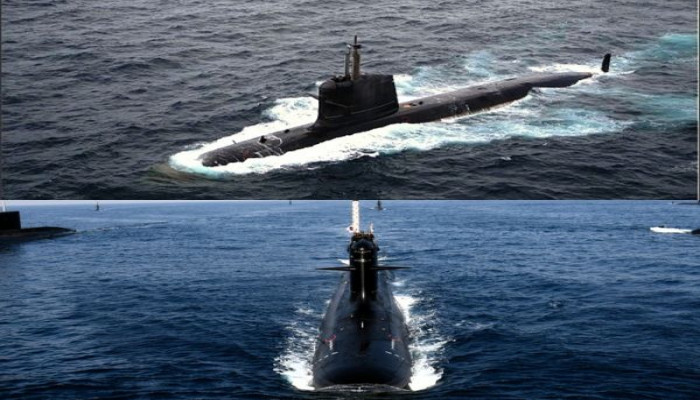India set to finalise record Rs 1.06 lakh crore submarine deal to strengthen Navy
- In Reports
- 09:36 PM, Jul 11, 2025
- Myind Staff
India is getting ready to sign its biggest ever defence agreement, a Rs 1.06 lakh crore deal that is expected to greatly improve the Indian Navy’s underwater strength over the next ten years as tensions grow in the Indo-Pacific and China expands its presence in the Indian Ocean. India’s boldest naval modernisation comes amid reports of Pakistan's increasing defence investments.
According to sources, the defence ministry is likely to finalise the submarine contracts and hand them over to Mazagon Dock Shipbuilders Limited by the end of the next financial year, with this major agreement forming a key part of Project 75I that will boost India’s sea power and begin a fresh chapter in local defence production.
India currently operates 16 conventional submarines, with INS Vagsheer recently added under the first Project 75, which added six Kalvari-class Scorpene submarines, which are now the core of India’s underwater defence force.
The Indian Navy has also commissioned a new warship, INS Tamal, which was built with help from Russia and is armed with the powerful BrahMos cruise missile, further strengthening the country’s surface fleet.
Even with these developments, officials believe India must move faster to match rising threats in the region as China’s navy, known as the People’s Liberation Army Navy, already has around 355 ships and submarines, making it the world’s largest naval force, while Pakistan is also expanding its submarine capabilities with support from China.
To respond to this, India is pushing ahead with Project 75I, and is close to finalising a Rs 70,000 crore deal for six submarines that will include the latest in stealth and propulsion technology.
Under this project, Mazagon Dock Shipbuilders Limited will work together with Germany’s ThyssenKrupp Marine Systems to build six advanced submarines based on the HDW Class 214 model, which will come with Air Independent Propulsion systems, allowing them to stay underwater for up to two weeks without surfacing, giving a strong advantage for stealth missions.
Each of these submarines will be 72 metres long, weigh 2,000 tonnes, have eight weapon tubes and space for 27 crew members, with the AIP system generating electricity through a chemical process involving hydrogen and oxygen so the submarine can move without creating engine noise.
An important part of the deal is that the first submarine will be made with 45 percent Indian content which will increase to 60 percent by the time the sixth one is completed, and Germany will also share its technology with India so that the country can eventually build such submarines on its own, with the first one expected seven years after the contract is signed and the rest delivered one per year after that.
Alongside this project, the government is also preparing to approve another submarine deal worth Rs 36,000 crore to build three next-generation Scorpene-class submarines which will be improved versions of the Kalvari class and will have 60 percent local components, and these will be based on the same design being used for submarines made for the Brazilian Navy.
The first submarine under this new deal will be delivered in six years, with the other two to follow one per year, and along with the HDW-class submarines, they will greatly increase the Navy’s ability to carry out underwater attacks.
India’s focus on becoming self-reliant is also shown through the success of the Defence Research and Development Organisation which has built a local Air Independent Propulsion system, and in December 2024 the government signed a Rs 1,990 crore deal with Mazagon Dock to install this system on the existing Kalvari-class submarines starting with INS Kalvari during its major refit in September 2025.
In another deal worth Rs 877 crore, India is working with France’s Naval Group to equip the Kalvari-class submarines with electronic heavyweight torpedoes to further improve their underwater combat capabilities.
These large defence projects are also expected to create a lot of jobs, with the AIP project alone set to produce around three lakh man-days of employment, and Mazagon Dock has already partnered with more than 50 Indian companies, while the Indian division of Naval Group is training over 70 Indian engineers in modern submarine systems.
The current facilities at Mazagon Dock can handle the building of 11 submarines and 10 destroyers at the same time, and the company has already shown its ability by completing all six submarines under the original Project 75, while India’s long-term naval plan aims to build a fleet of 175 ships by the year 2035, and at present the Navy has more than 130 ships with 61 more under construction.
The increased focus on Project 75I and the expansion of the Scorpene-class fleet is not just about increasing numbers, but a necessary move to ensure that India maintains a strong and reliable undersea defence force in the Indian Ocean Region and other key areas especially as both China and Pakistan work to strengthen their presence over critical sea routes.







Comments